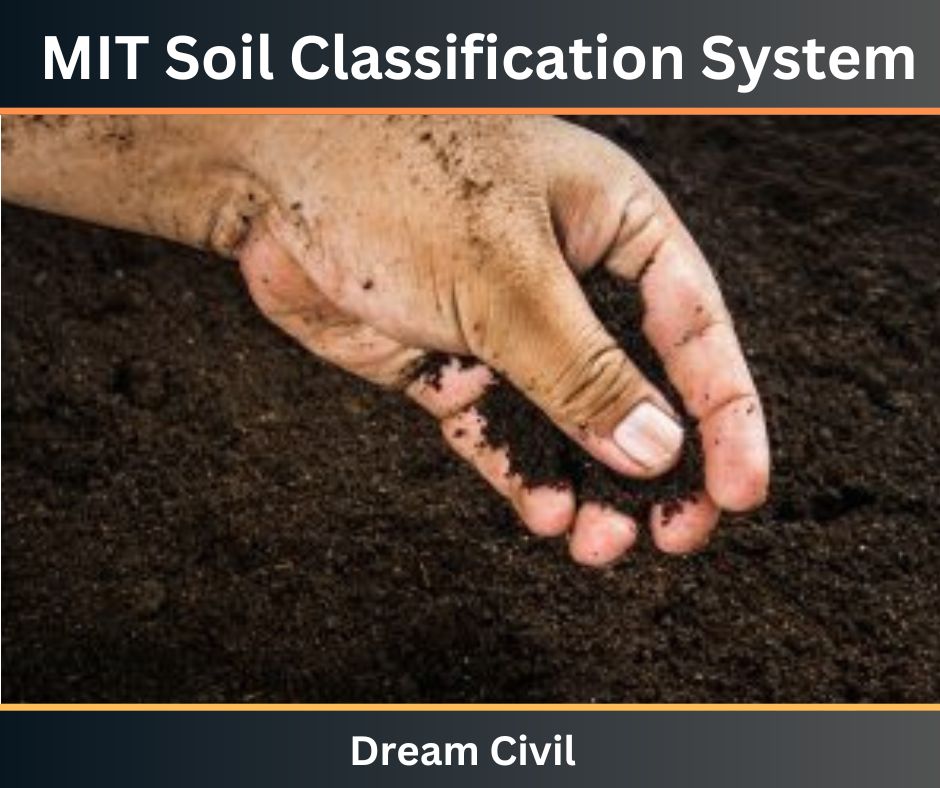Table of Contents
The MIT soil classification system was first developed by Prof. G. Gilboy at Massachusetts Institute in the USA.
Many engineering properties of soils are related to particle size characteristics. On the basis of their particle size, soils may be classified as boulders, cobbles, gravels, sands, silts, or clays. One such method of classifying soils is MIT Soil Classification System.
In this classification, particles greater than 200 mm are considered boulders, and particles between 60 mm to 200 mm are considered cobbles.
Gravel ranges from (60mm to 2mm), Sand ranges from (2.0mm to 0.06mm) and Silt ranges from (0.06mm to 0.002mm).
Smaller than 0.002 mm is considered clayey.
In addition, each type of soil is divided into coarse, medium, and fine.
1. Classification of MIT Soil Classification System
According to this classification, the soil is classified into four main categories as follows:

1. Boulder ( Particle size greater than 200 mm ).
2. Cobble ( Particle size between 60 mm to 200 mm).
3. Gravel (soil with particle size greater than 2mm).
- Coarse Gravel: 20 mm to 60 mm
- Medium Gravel: 6 mm to 20 mm
- Fine Gravel: 2 mm to 6 mm
4. Sand (soil with particle size ranging from 0.06mm to 2mm).
- Coarse Sand: 0.6 mm to 2 mm
- Medium Sand: 0.2 mm to 0.6 mm
- Fine Sand: 0.06 mm to 0.2 mm
5. Silt (soil with particle size ranging from 0.002mm to 0.06mm).
- Coarse Silt: 0.02 mm to 0.06 mm
- Medium Silt: 0.006 mm to 0.02 mm
- Fine Silt: 0.002 mm to 0.006 mm
6. Clay (soil with particle size less than 0.002mm).

Figure: MIT System of Soil Classification
2. References1. Content Filter & Authenticity Checking Team, Dream Civil International (Our team checks every content & detail to maintain quality.) |
Read More: Classification of Soils

